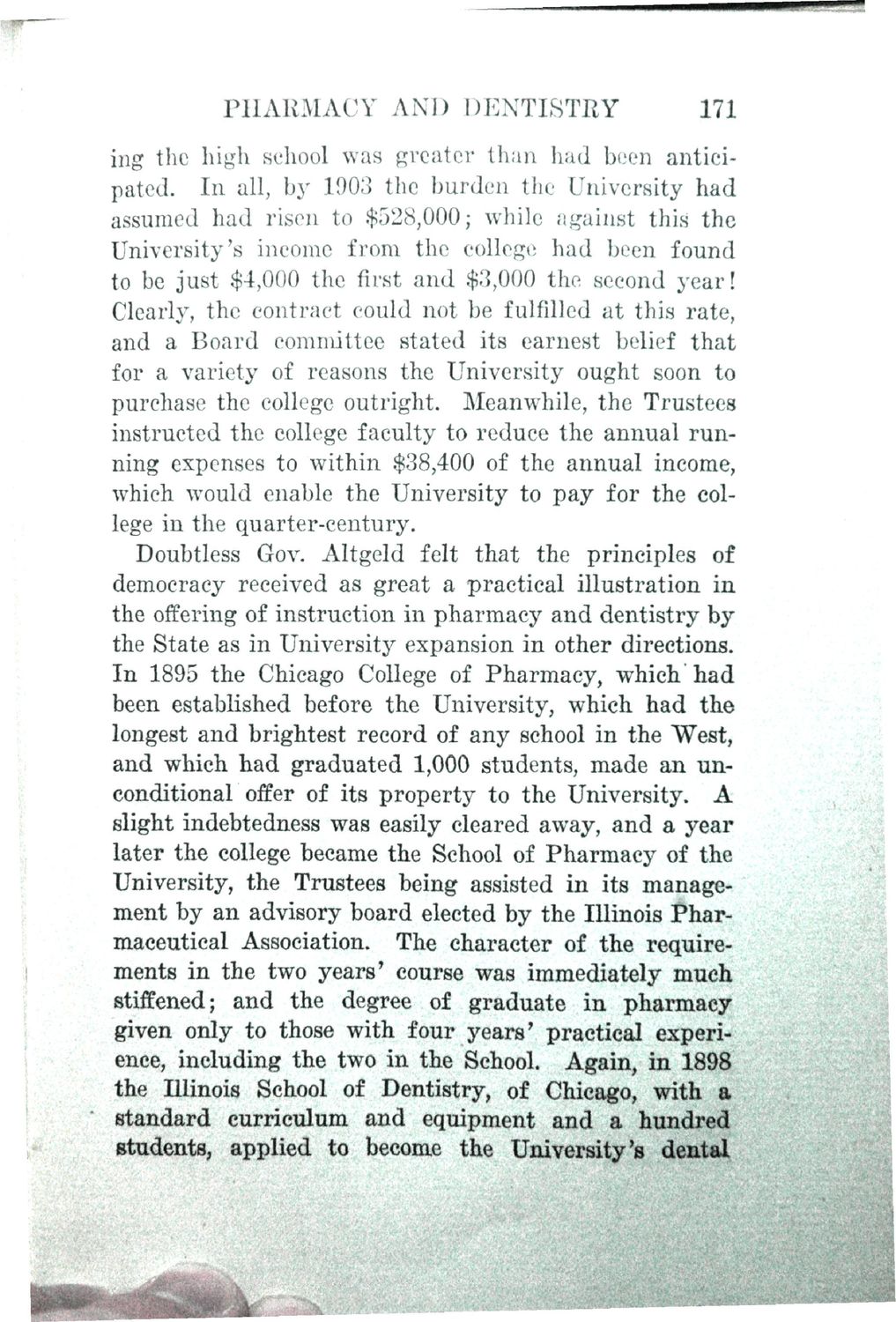| |
| |
Caption: Book - History of the University (Nevins)
This is a reduced-resolution page image for fast online browsing.

EXTRACTED TEXT FROM PAGE:
PHARMACY AND DENTISTEY 171 ing the high school was greater than had been anticipated. In all, by 1903 the burden the University had assumed had risen to $528,000; while against this the University's income from the college had been found to be just $4,000 the first and $3,000 the second year! Clearly, the contract could not be fulfilled at this rate, and a Board committee stated its earnest belief that for a variety of reasons the University ought soon to purchase the college outright. Meanwhile, the Trustees instructed the college faculty to reduce the annual running expenses to within $38,400 of the annual income, which would enable the University to pay for the college in the quarter-century. Doubtless Gov. Altgeld felt that the principles of democracy received as great a practical illustration in the offering of instruction in pharmacy and dentistry by the State as in University expansion in other directions. In 1895 the Chicago College of Pharmacy, which had been established before the University, which had the longest and brightest record of any school in the West, and which had graduated 1,000 students, made an unconditional offer of its property to the University. A slight indebtedness was easily cleared away, and a year later the college became the School of Pharmacy of the University, the Trustees being assisted in its management by an advisory board elected by the Illinois Pharmaceutical Association. The character of the requirements in the two years' course was immediately much stiffened; and the degree of graduate in pharmacy given only to those with four years' practical experience, including the two in the School. Again, in 1898 the Illinois School of Dentistry, of Chicago, witjb. a standard curriculum and equipment and a hunjtred students, applied to become the University's I
| |